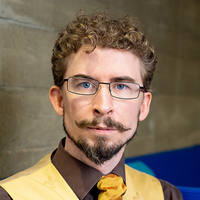NANOSEQ: Nanorate sequencing, ultra-accurate detection of somatic mutations
Archive Page
This page is maintained as a historical record and is no longer being updated.
Technology
Nanorate sequencing (Nanoseq), is a method developed by scientists at the Sanger Institute that reduces error rates to less than 5 errors per billion calls, much lower than typical somatic mutation rates. This is achieved by limiting errors during the preparation of DNA libraries, avoiding extension of internal nicks and error-prone end-repair.
Nanoseq uses blunt-end restriction enzymes to fragment DNA and dideoxy bases (ddBTPs) to avoid nick extension. A mathematically modelled dilution step is used to optimize the efficiency and yield of the method. The bioinformatic pipeline incorporates a set of carefully calibrated methods to filter unreliably mapped reads and detect contamination.
Advantages
- UNDERSTAND somatic mutation rates in any cell type, including non-dividing cells.
- ACCURATE measurement of mutation rates and signatures in mutagenesis screens.
- ABILITY to detect mutations in blood or non-invasive biopsies.
Applications/Context
Highly specific detection and quantification of somatic mutations in any cell type. Quantitating the impact of environmental exposures on human tissues or studying known or new mutagens in vitro.
Comparable Technologies
Existing highly error-corrected protocols, such as bottleneck and duplex sequencing, have error rates similar or above the rate of real somatic mutations in normal tissues. Hence, when applied to human samples a considerable number of technical errors is introduced, complicating the interpretation of results.
Background
The ability to distinguish real mutations from experimental noise in somatic tissue is key for understanding the role of somatic mutation in cancer and ageing or how our bodies deal with environmental insults. We know that cells accumulate mutations as they age and these can drive disease states such as cancer. While detecting mutations in tumours is straightforward, detecting mutations in non-clonal cell populations (e.g. tissue biopsies or blood) is not possible with standard sequencing methods and has required special approaches.
Intellectual property
Priority patent application filed.
The Wellcome Sanger Institute is offering non-exclusive diagnostic licenses to its IPR.
Download
 NANOSEQ Sanger Technologies
NANOSEQ Sanger Technologies
